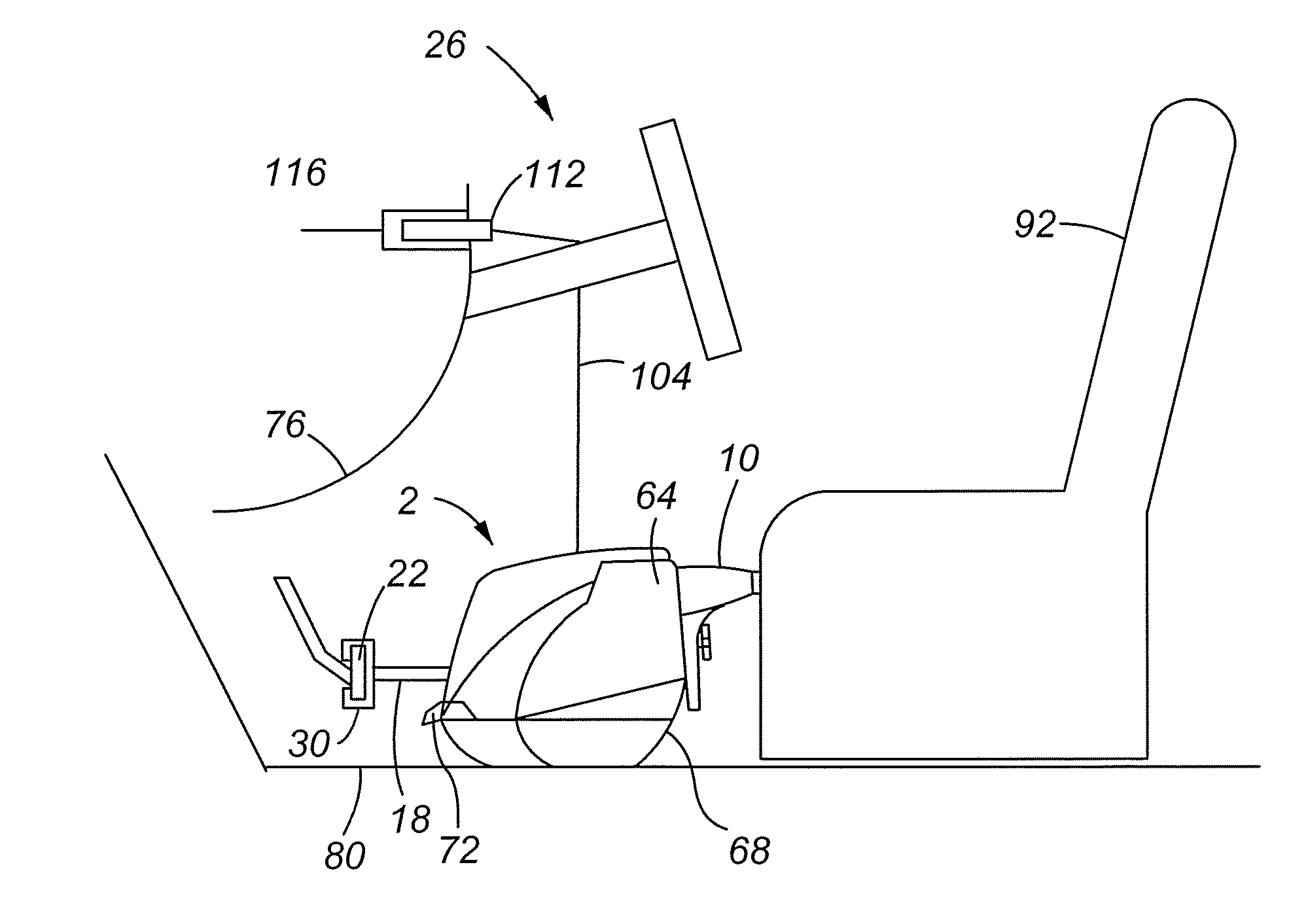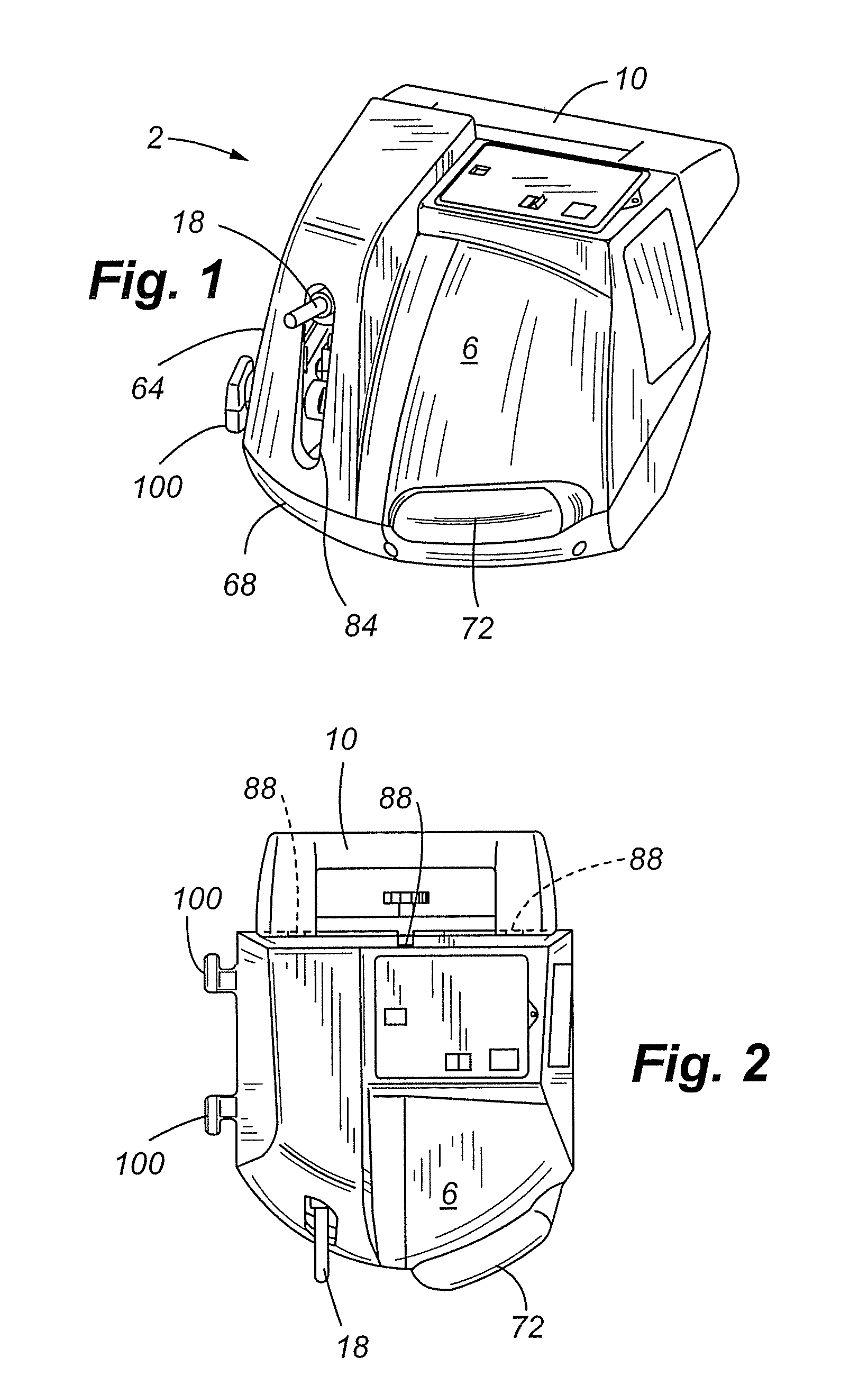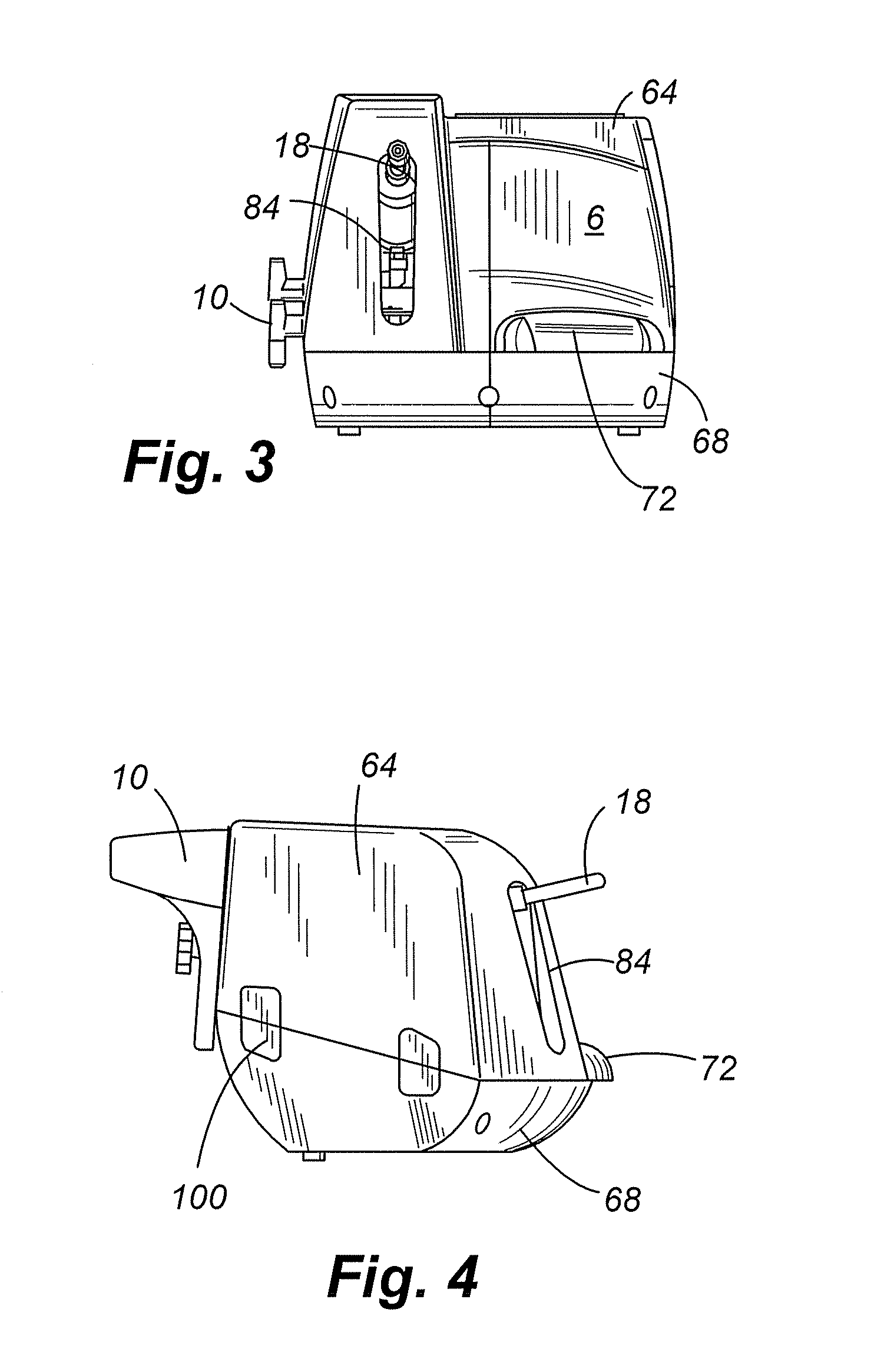Towed Vehicle Braking Apparatus
a technology for towed vehicles and brakes, applied in braking systems, analogue processes for specific applications, instruments, etc., can solve problems such as limiting the life span, reducing performance, and failure of the towing vehicle's brakes, and achieve the effect of effectively actuating the towed vehicle's brakes
- Summary
- Abstract
- Description
- Claims
- Application Information
AI Technical Summary
Benefits of technology
Problems solved by technology
Method used
Image
Examples
Embodiment Construction
[0045] Various illustrative embodiments of the present invention will now be discussed. It is envisioned that the improvements described herein can be tailored to many different types of auxiliary braking systems (e.g., pneumatic, hydraulic, etc.). Thus, the following descriptions of embodiments of the present invention are meant to clarify how the improvements described herein could be employed in a conventional system and as such, any discussion of the type of the individual components of an auxiliary braking system are not intended to limit the scope of the present invention in any manner.
[0046]FIGS. 1-14 depict various perspective and elevation views of one embodiment of the auxiliary braking apparatus 2. In general, the auxiliary braking apparatus 2 is comprised of a housing 6 interconnected to a stand-off member 10. As shown in FIG. 10, a basic schematic representation of one embodiment of the present invention, the housing 6 encases a cylinder 14 with an actuator arm 18 that...
PUM
 Login to View More
Login to View More Abstract
Description
Claims
Application Information
 Login to View More
Login to View More - R&D
- Intellectual Property
- Life Sciences
- Materials
- Tech Scout
- Unparalleled Data Quality
- Higher Quality Content
- 60% Fewer Hallucinations
Browse by: Latest US Patents, China's latest patents, Technical Efficacy Thesaurus, Application Domain, Technology Topic, Popular Technical Reports.
© 2025 PatSnap. All rights reserved.Legal|Privacy policy|Modern Slavery Act Transparency Statement|Sitemap|About US| Contact US: help@patsnap.com



